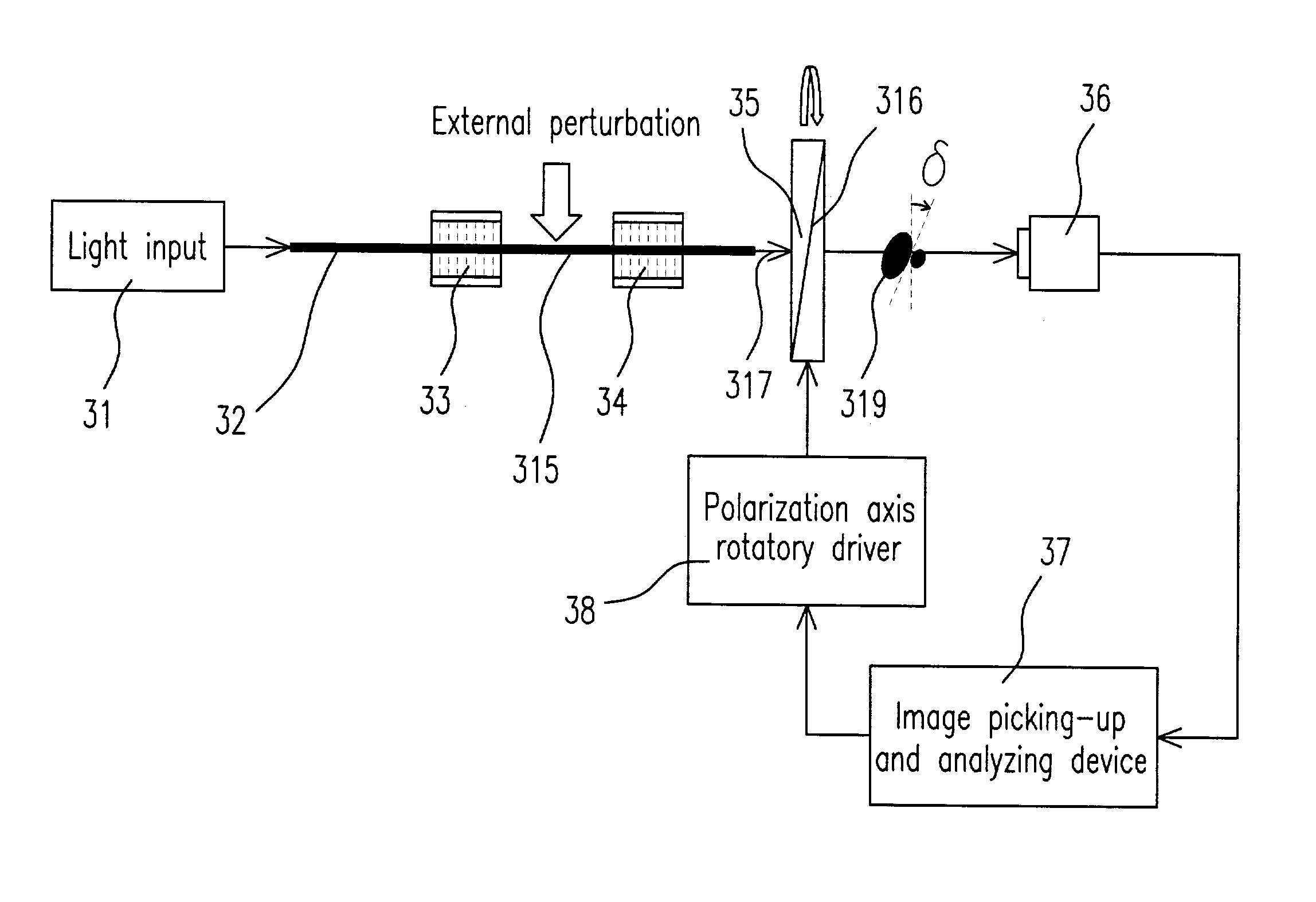Dual mode fiber-optic interferometer with circular-core fibers and birefringent modal filters and an interfering method thereof
- Summary
- Abstract
- Description
- Claims
- Application Information
AI Technical Summary
Benefits of technology
Problems solved by technology
Method used
Image
Examples
Embodiment Construction
[0033]Please refer to FIG. 3(a) which illustrates the structural schematic view in a preferred embodiment according to the present invention. The structure includes a light input 31, a first dual-mode optical fiber 32, a first modal filter 33, a second dual-mode optical fiber 315, a second modal filter 34, an analyzer 35, a charge coupled device (CCD) 36, a image picking-up and analyzing device 37, and a polarization axis rotatory driver 38, wherein the analyzer 35 includes a polarization axis 316.
[0034]When the light input 31 is incident into the first dual-mode optical fiber 32, the HE11, TE01, TM01, and HE21 modes (all are not shown) will be excited, wherein the HE11 is a fundamental mode and the others are second-order modes. Moreover, when all these modes are propagated to the first modal filter 33, the TM01 and the HE21 will be filtered, the HE11 will be attenuated, and the TE01 will remain the same. Thus, the comparison of the attenuation ratio is TM01 and HE21>>HE11>TE01. Be...
PUM
 Login to View More
Login to View More Abstract
Description
Claims
Application Information
 Login to View More
Login to View More - R&D
- Intellectual Property
- Life Sciences
- Materials
- Tech Scout
- Unparalleled Data Quality
- Higher Quality Content
- 60% Fewer Hallucinations
Browse by: Latest US Patents, China's latest patents, Technical Efficacy Thesaurus, Application Domain, Technology Topic, Popular Technical Reports.
© 2025 PatSnap. All rights reserved.Legal|Privacy policy|Modern Slavery Act Transparency Statement|Sitemap|About US| Contact US: help@patsnap.com



